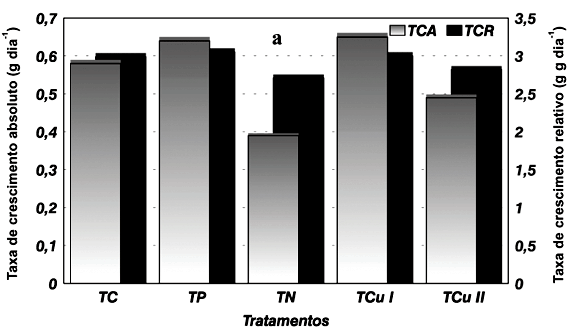Water hyacinth plants were cultivated in a Hoagland & Arnon n.2 nutrient solution with increased N, P and Cu levels establishing the differences among the treatments. The experimental design was completely randomized, with four replicates. Physiological evaluations included leaf area, dry matter and growth analysis parameters (absolute growth rate, relative growth rate, net assimilatory rate, leaf area ratio, specific leaf weight, specific leaf area). Biochemistry evaluations were total and reducing sugars, total amino acids and activity of the antioxidant enzymes (glutathione S-transferase and superoxide dismutase). The enzyme extract was obtained from fresh matter of the aerial part of the plants. Root and leaf dry material was used to determine total and reducing sugars, and amino acids. Nitrogen supplementation caused increased levels of sugars in the leaves and of amino acids in the roots. The treatment with excess phosphorus caused increased levels of sugars in the roots. The results suggest that copper (0.12 mg L-1) increased the activity of GST and SOD, inducing stress in the water hyacinth plants.
heavy metal; superoxide dismutase; glutathione S-transferase; plant growth analysis






